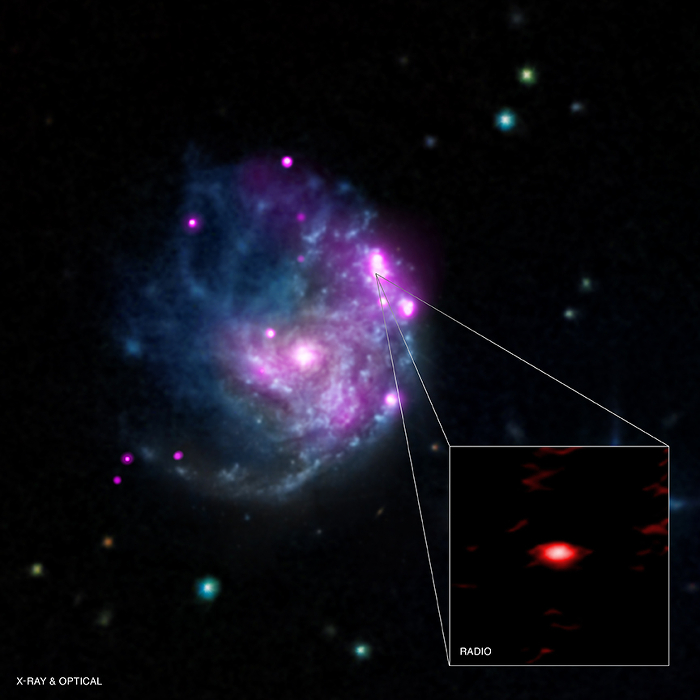
 Credit: X-ray: NASA/CXC/SAO/M.Mezcua et al & NASA/CXC/INAF/A.Wolter et al; Optical: NASA/STScI and DSS; Inset: Radio: EVN/VLBI
Credit: X-ray: NASA/CXC/SAO/M.Mezcua et al & NASA/CXC/INAF/A.Wolter et al; Optical: NASA/STScI and DSS; Inset: Radio: EVN/VLBI
A Missing Black Hole Found?
Although black holes are mysterious objects, they are actually rather simple, possessing only 3 properties: mass, spin and charge. Determining these properties can be difficult, even for the most fundamental property, the black hole's mass. But astronomers have demonstrated that black hole masses are related to their radio and X-ray brightness in a rather simple way, and that this relation seems to hold for all types of black holes, from stellar mass black holes all the way up to the supermassive beasts which lie at the nuclei of galaxies. This relationship means that, if the radio and X-ray brightness can be determined, then the mass of the black hole can be estimated. Recently, astronomers, using the European Very Long Baseline Interferometer Network (EVN) and the Chandra X-ray Observatory, measured the radio and X-ray brightness of a source known as NGC2276-3c in the galaxy NGC 2276. Using the relation between X-ray and radio brightness and mass, they showed that this particular source is probably a black hole with a mass of 50,000 times the mass of the sun. Intriguingly, the radio observations also showed the existence of a jet similar to those associated with actively feeding supermassive black holes. This suggests that NGC 2276-3c belongs to the rare category of "intermediate-mass" black holes, the missing link between stellar-mass and supermassive black holes. If confirmed, it may help astronomers understand how supermassive black holes are built.
Published: March 30, 2015
<
HEA Dictionary ● Archive
● Search HEAPOW
● Other Languages
● HEAPOW on Facebook
● Download all Images
● Education ● HEAD
>

Each week the HEASARC
brings you new, exciting and beautiful images from X-ray and Gamma ray
astronomy. Check back each week and be sure to check out the HEAPOW archive!
Page Author: Dr. Michael F. Corcoran
Last modified Monday, 26-Feb-2024 17:22:47 EST


